Keeping the radiator in good shape makes your car last a long time. Given that this component helps cool down your engines, it plays a pretty big role in keeping the engine healthy, and therefore, your car running smoothly.
But what do you do when there is a leak or damage in your car’s radiator? Do you replace the whole thing? While that is an option you could try out, replacing car radiators is quite an expensive substitution.
Instead, what you could do is get the best epoxy for repairing you radiator. This way, not only will you be saving a lot of money and seemingly less cracked radiator repair cost but you’ll also have a radiator that feels and works like its brand new.
Don’t have enough time? Just check out our top three products below.
| Image | Name | Editor’s Rating | Price |
|---|---|---|---|
     |
JB-WELD PLASTIC RADIATOR REPAIR | ||
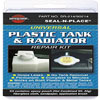     |
VERSACHEM PLASTIC RADIATOR REPAIR KIT | ||
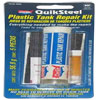     |
BLUEMAGIC QICKSTEEL RADIATOR & PLASTIC TANK REPAIR |
best Epoxy for Plastic Radiator Repair Reviews
Out of the many options available in today’s market with similar claims, getting yourself a good quality epoxy for plastic radiator repair can become quite difficult. To make this decision easier for you, we have listed down nine of the finest ones available that surely won’t let you down.
1.J-B Weld 2120 Radiator and Plastic Repair Kit
Just to give you an instant answer, the J-B Weld 2120 is the best epoxy for plastic radiator repair for you undoubtedly. It is a handy dandy epoxy repair kit that can be mixed in the packaging bag. By simply bursting the center seam of the pouch, you will be able to mix and knead the putty inside the bad without your hands getting dirty.
Additional tools such as a sanding paper, fiberglass cloth, and an applicator brush are included with the purchase. This is all packed inside a small package that you can keep inside your car for emergencies. With no need to buy any more tools, you are always ready to fix a hole or a crack.
The jb weld plastic radiator epoxy with Its strong heat resistant putty can be used to fix up holes that are up o 3/8 of an inch in diameter. Cracks that are 4 inches long can also be taken care of with ease.
Highly waterproof epoxy putty is great for tanks that carry liquid. Unlike some other epoxies, this one won’t slide off even if the epoxy layer is underwater 24/7. So you can use this putty for water pipes, water tanks, and other components besides a radiator.
Highlighted Features
- Waterproof epoxy; won’t come off even if left underwater 24/7
- Fixes holes that are 3/8 of an inch in diameter and 4-inch cracks
- All additional tools are included
- Can be mixed in the pouch
2.Versachem 90214 Plastic Tank and Radiator Repair Kit
Most of the time, to help your epoxy stick better to your radiator or tank, you need to drain the component. This can be a tough task as you will have to remove the tank from your car.
This is where easy-to-use epoxies like this one come in handy. With this Versachem repair kit, there is no welding or draining involved, so now you won’t have to remove that heavy tank from your car.
A high-quality plastic radiator repair epoxy such as this one is the best for gasoline or diesel fuel tanks. Great compatibility with both plastic and metal makes this a flexible and helpful option for everyone.
In less than 20 minutes, you will have a leak-free tank. No need to wait around for curing and setting, a quick-dry feature makes sure your work in done fast. The ability to stay put even in high temperatures ensures that this putty will keep all cracks and leaks sealed. For up to 200 degrees F, the putty will stay stiff.
Holes that are up to ½ an inch in diameter can be filled with this epoxy.
Highlighted Features
- No welding or draining required
- Sanding paper, fiberglass cloth and application brush include
- Works for both gasoline or diesel fuel tanks
- Great for plastic and metal
- Gives you a leak-free tank in less than 20 minutes
- Does not melt in up to 200 degrees F
- Fills ½ inch diameter holes
3.Blue Magic 6522K QuikSteel RADIATOR & Plastic Tank Repair Kit
Sometimes having a layer of epoxy on a tank or radiator means that no other additional layers, like paint, can be added. With this Blue Magic quick steel repair kit, not only can you pain, but you can drill, file, sand, and tape. No damage will be done to the epoxy.
With 5950 PSI strength, nothing can put a crack on this plastic radiator repair epoxy. Once the layer is on, you can rest assured that all cracks and holes are taken care of permanently. No need to replace this epoxy layer for years to come.
500 degrees F heat capacity also makes sure that the layer does not move. No matter how hot it gets inside your car, the epoxy layer will not deform or lose shape.
You only need to give this epoxy 5 minutes to set and an hour to cure. Being one of the fastest drying epoxies on the market, this one is great to keep in your car in case of an emergency. The quick-dry concoction can be whipped out to mend almost anything starting from radiators to water coolers.
This epoxy is NSF certified and can be used on tanks that carry drinking water as well.
Highlighted Features
- Can be painted, drilled, filed, tapped and sanded over
- 5950 PSI makes this an epoxy with one of the strongest holds
- Does not lose shape in high heat; heat capacity of 500 degrees F
- Quick-dry epoxy only needs 5 minutes to set and an hour to cure
- NSF certified and can be used on drinking water as well
4.J-B Weld 50133 Plastic Bonder Structural Adhesive Syringe
Most of the time, two-component adhesives can be hard to deal with. With all the extra mixing trays and tools involved, the process can get a bit messy. Well, not with this one! With a mixing tray and stir stick provided, you won’t have to worry about getting additional supplies. All that you need is included with this purchase.
Available in a handy syringe, getting the 1:1 ratio on this one is easier. You can also use this syringe to pour over the epoxy neatly without having to worry about any spillage. An airtight cap that comes with this syringe allows you to work slowly and to store any leftover epoxy without the content drying out.
So, now you can store pre-mixed epoxy for multiple uses. Not only can this epoxy get rid of cracks, but the mix is also a great gap-filling system. This is why this amazing epoxy has concurred the 4th position in this plastic radiator repair kit review. With a tensile strength of 3770 PSI, the bond that this epoxy creates is unbreakable.
Any material that is constructed with aluminum, fiberglass, ceramic, or tiles or carbon fiber composites can be fixed with this epoxy. So you can use this mixture to repair your radiator, bumper, or any dents in your car.
Highlighted Features
- Neat application process thanks to the syringe
- The syringe comes with an airtight lid that helps store pre-mixed epoxy
- Mixing tray and stick provided
- Tensile strength of 3770 PSI
- Can be used on aluminum, carbon fiber composites, ceramic, tiles, etc.
- Great for fixing up car radiators, bumpers and even dents on your car
5.Permatex 84145 Permapoxy Black Plastic Weld
Having to wait for the epoxy adhesive to set and cure for a long time could decrease your productivity. You cannot use your car properly until the bond sets. That is why getting quick-dry epoxies like this one is the best. With a setting time of just five minutes, you won’t have to babysit your car for hours now.
Fast dry epoxies will also cure quicker, meaning you won’t have to sit around and wait.
Known to have a strong bonding capability, this epoxy can be used on plastic, ceramics, or even wood. However, the mix works best when used to repair radiators that are constructed with ABS plastic. Having a tensile strength of 3500 PSI, you won’t have to worry about the cracks reappearing or the bond cracking.
Mixing up the adhesive is not a complicated procedure. You can use a simple popsicle stick to mix the epoxy until you find an even consistency. When dried completely, the epoxy has a matte black finish. Therefore you can also use this paste on your bumper and car dents as a temporary solution.
Highlighted Features
- Matt black finish allows you to use this on your car’s exterior
- Takes just 5 minutes to set
- Fast curing time
- 3500 PSI tensile strength keeps cracks and holes sealed
- No chances of the bond cracking or melting
6.K-SEAL Coolant Leak Repair
Getting an epoxy, spending hours mixing it, and attaching a car radiator only to find out after a few months that the bond has cracked is a feeling we all hate. To avoid a situation like this one, you need this K-seal coolant that will weld together any kind of plastic.
This epoxy is one of the few that meets the ASTM D3147 standard. So you can rest assured that with this epoxy, your radiator will stay free of cracks and holes for years to come.
Not only is this a useful way to repair car radiators, but the versatile mix can also be used to repair freeze plugs, water pump casings, or heater cores without having any effect on the performance of the tools.
Besides being so strong and flexible, the epoxy is also extremely easy to use. There are no parts that you need to mix. The whole mix comes in a bottle that you give a quick shave before use. When you’re done with that, you can just pour over the mixture into the radiator.
To help speed up the drying process, you could add heat. A great way to do this is to turn on your engine.
Highlighted Features
- Can seal holes that are up to 1/32 of an inch deep
- No mixing required
- Versatile
- Pressure and heat resistant
- Does not affect the performance of the tool
7.J-B Weld 8237 PlasticWeld Plastic Repair Epoxy Putty
While two-component epoxy adhesives might be stronger and easier to access, mixing them up to the right consistency can sometimes be a chore. They cause too much mess, and they just won’t stick right if they’re not combined well. That is why we recommend this hand mixable epoxy putty.
Due to the thicker putty consistency, you will be able to mix this two-part adhesive on your bare hands. No mixing tool, tray, or stick needed. You also get quite a long working time, so you can knead the putty perfectly without it drying on your hands.
Once an even coat is applied to the crack or hole, the putty takes about 25 minutes to set and then an additional 3 hours to cure. A fast dry epoxy adhesive like this is much better than the ones that require you to set aside your car for 12 to 24 hours. So now you can fix your radiator and have the thing working in just a few hours.
Also, the putty might be thick in texture won’t block or clog airflow. A 600 PSI strength reading tells you just how strong the bond is as well.
Get rid of any holes or leaks with this easy to use quick-dry epoxy, which also happens to be heat resistant. When fully cured, this putty will be able to withstand up to 300 F intermittent temperature.
Highlighted Features
- No mixing tools required
- Sets in 25 minutes and cures completely in 3 hours
- 600 PSI strength level
- Can withstand 300 F temperature without deforming
8.J-B Weld 8297 HighHeat 550 Degree Epoxy Putty Stick
One thing that distinguishes a good quality epoxy from a bad one is the heat capacity. Too much heat can sometimes break down epoxy adhesives leaving the crack or hole exposed. As the inside of a car gets hot quite often, you might want to consider this epoxy putty stick that can stay set and strong in up to 450 degrees F.
This putty will make even the best plastic radiator stop leak. Besides radiators, you can use this putty on engine blocks, tailpipes, and exhaust manifolds. Such great strengths and heat capacity makes this one of the best epoxies for plastic radiator repair.
The machine gray putty takes about a total of 9 hours to do its job. Within an hour, the putty will be set and in 8 hours cured completely.
Industrial strength epoxy putties like this one rarely disappoint. This one can also be used on metal. Multifunctional epoxies like this one are great to have at hand. Thanks to great airtight storage, you will also be able to save the putty you didn’t use for later.
Highlighted Features
- Can withstand 450 degrees F without increasing viscosity
- Airtight storage to keep leftover putty fresh
- Can be used on metal or any other hot part of your car
- 1 hour setting time and 8-hour curing time
9.J-B Weld 8276 KwikWeld Quick Setting Steel Reinforced Epoxy
This quick setting, versatile and easy-to-use epoxy can be used for automobile parts, marine repairs, plumbing, and even arts and crafts. You can use this epoxy on metal, plastic, and many different kinds of surfaces without hesitation. The versatility and flexibility of this epoxy are what make it so popular.
If you’re a fan of J-B Weld epoxies, you are going to love this one. This version from the brand is an epoxy that is stronger and dries even faster.
You get a decent amount of working time in which you can knead, mix, shape, and mold the epoxy according to your requirements. After application, the epoxy will set in 6 minutes and take about 4-6 hours to cure completely. A simple 1:1 ratio makes mixing the two components of the adhesive easy. There is no measurement involved.
With a tensile strength of 2424 PSI and a heat capacity of 300 degrees F, this epoxy will last through anything. You can paint, sand, and even drill on a surface that has this epoxy layer on without any damage done.
Highlighted Features
- Easy-to-mix 1:1 ratio
- 2424 PSI tensile strength makes this epoxy secure
- Can be drilled and sanded over
- A good amount of working time before the epoxy starts to set
- Quick cure epoxy that sets in 6 minutes and cures in 4-6 hours
Things to Consider before Buying Epoxy for Plastic Radiator Repair
Some distinctive factors in the best quality epoxies set them apart from all the available ones. Taking a good look at these features before settling on an epoxy will make sure you get the best fit.
-
Easy to Mix
Epoxies come in a lot of different forms. Some have two or three components that need to be mixed, some come in a bottle that just needs to be shaken. Some need to be kneaded. Always go for the kind that is the most compatible with your situation and time limit.
If you want something to keep at hand in case of an emergency, a quick shake-up bottle of epoxy will be a good idea; you won’t get your hands dirty. If you decide to settle for the kinds that have to be kneaded, make sure the epoxy gives you a good amount of working time before it sets.
You should be able to mix the components properly before the mixture starts to set.
-
Quick Seal
The best epoxy for plastic radiator repair will never take more than a few hours to completely seal in. These will be able to permanently weld together any holes or cracks on plastic and sometimes even in metals. You can find ones that set within 12 or even lesser hours.
Getting epoxies that don’t heal quickly will have you waiting for hours or days before you can use your car again, decreasing productivity and wasting your valuable time. That is why you should always look out for the drying time of your epoxy before deciding to purchase the component.
-
Non-Clogging
Finding an epoxy that sets hard and rigid is important. But keep in mind besides having those qualities that epoxy that you buy also needs to have a slight breathable quality. The radiator in your car is there to keep the temperature of your engine controlled.
To do so, the component has to have a certain level of airflow that can pass through. Slapping on an epoxy, that blocks that flow, on a large crack or hole on your radiator might compromise your radiator’s performance. Always go for epoxies that are good under pressure, don’t snap, and are also non-clogging.
-
Water-Resistant
Some epoxies tend to slide right off when they come in too much contact water. Although they might cost a bit more, epoxies that are water-resistant are great as they last longer. This kind is a must when you’re trying to fix a leak somewhere. The epoxy won’t go mushy or melt off and will keep all holes and cracks sealed together.
-
Heat-Resistant
Epoxies set faster when the heat is applied. But after the setting procedure, some epoxies tend to melt off due to excess heat. The inside of your car will naturally have a higher temperature. A good quality epoxy that repairs plastic radiators will stay put no matter how hot it gets in there.
Different Types of Epoxies for Plastic Radiator
Many kinds of epoxies available can be used for adhering plastic components together. The two main kinds are one-component epoxy and two-component epoxy.
- One-Component Epoxy
This kind is easy to use and requires no mixing. They don’t need any kind of catalyst. You can just give the tube or bottle the epoxy comes in a good shake, and you’re good to go. One thing to note about this kind of epoxy is that they set in higher temperatures.
Well known for being extremely durable, weather, and high-temperature resistant, this is the best kind of epoxy for a stronghold. They also take no time to harden and set completely!
- Two-Component Epoxy
Two-component epoxies need to be mixed to form a smooth paste or liquid. You need to make sure that this mixing process is done quickly before the concoction starts to set. A catalyst is involved, and the epoxy can dry at a much lower temperature.
They do take a longer time to dry off completely, but you can apply some external heat to speed up the process. If external heat is applied, the overall adhesiveness of the epoxy increases as well. Two-component epoxies are flexible and can be used for coating, bonding, or sealing.
CRACKED PLASTIC RADIATOR REPAIR for free
Sounds interesting? Okay, so now, let’s be frank, many people haven’t been satisfied after trying different types of epoxies from many promising providers. Some see an initial success, but gets into the same trouble again.
We kept thinking, how to give it a permanent solution, that too without spending a penny. Our team came up with this amazing idea of filling the crack with the same manufactured material cut from the radiator.
Yeah we know this sounds crazy, but we did it anyway. And you know what? The result was insane!
After replacing the crack with the originally manufactured component by melting and mixing them together, we travelled 100,000 miles and there were no issues.
Finally we came up with this decision, yeah, it works and it works great!
You can’t wait to go for it right? What are we waiting for? Now stop asking how much is it to fix a radiator leak okay? It’s completely free of cost. Let’s dive in.
HOW TO FIX A CRACK IN A PLASTIC RADIATOR WITH ZERO COST
So, basically what we’re going to do is, we’re going to attempt to re-melt the plastic around the crack and insert new material to create kind of a plastic weld and we’re going to be doing this with the same material that the radiator was initially manufactured.
What we are going to need
The tools we’re going to use are very basic. Probably they’re in every workshops already.
- Wire brush
- Some type of Scraper or Razor blade
- Soldering iron ( A bit bigger than the regular ones might be better)
- Hacksaw
- Welding rod of plastic
What we must follow first
- Keep the area clean –
This is a must, keep the area clean. Wash it down, scrape it down to the bare plastic. Use a wire brush or whatever to make the area clean so the plastic that you’re going to melt, won’t get any contaminants.
- Keep it dry –
Make sure no water seeps back up through. Use a heat gun or a torcher even a blow dryer whatever. Just make sure the place is perfectly dry.
- Fill Material: –
To reinforce and fill the crack, you need good fill material. Snip it off a little part of the radiator that isn’t really important.
- Penetration and good mix: –
Penetration and a good mix of the old and new plastic is most important. For instance, you need to melt both sides of the crack, make a v shape hole. Don’t make a deep one, make as per your requirement. Then mix the material that you’ve collected earlier right into the v shape hole.
fixing plastic radiator crack – step by step
Now let’s start the mission. We have our tools , we have our all arrangements set. Now it’s time to fix our problem permanently.
- Collect two welding rods. We recommend you do that by cutting them from the cold side of the radiator. Little portion from the mounting protrusion will do.
- As discussed earlier, dry the problem area evenly with some compressed air. Also put a little bit heat with a torch or whatever tool you have so that there won’t be any contaminants.
Don’t forget to keep giving little pokes on the surface to know that you haven’t heated it too much.
- Melt the area just to the sides of the crack as well as the crack itself and at the same time put in a little bit of extra material with the soldering iron. Do it thoroughly through the whole crack area.
Continue moving around the bend and put that extra plastic rod underneath the soldering iron so that it just kind of pushes that new material into the crack.
However, do this in a well-ventilated area.
- You can apply the same procedure on any crack of the plastic area or any plastic that seems porous.
- Be conscious of keeping the radiator plastic hot while getting new plastic from your filler rod.
Voila! You’re done. Now wait for 3 to 5 minutes to dry the place up.
Now place the radiator in your truck and fly.
Caution: –
If you don’t have enough experience with these mechanical tools, we recommend you not try this. Even our experienced teammate got a little burn while doing so. But if you’re confident enough, go for it. You won’t regret.
Well, our handy dandy experiment comes to an end. We just fixed a cracked plastic radiator with zero costs .Hope this will help many of you.
Update after 1 week: –
Needless to say, we just tried this insane experiment right out of our mind and it came real good. After driving 100,000 miles. We haven’t faced any issues yet and we’re highly ambitious that you won’t find either. Try it out, experiment it, let us know surely how it went.
Frequently Asked Questions
To help you understand how epoxies work, what to do, and what not to do, we have answered some commonly asked questions.
At what temperature does a one-component epoxy set?
One component epoxies require a higher temperature to set than two-component epoxies. 250-300 degrees Fahrenheit is the temperature required for this kind of epoxy to set.
How long does an epoxy bond last?
When mixed and stuck on properly, an epoxy bond will last up to 3 years. This does depend on the situation the epoxy is in, for example, in warmer areas, the bond might last a little less than 3 years.
How to make the epoxy stick better to plastic?
For this, you might want to start with a clean surface. Remove all kinds of dirt and especially oil, before trying to seal a leak and hole. This way, the epoxy will not slide off of the surface and will give you a better bond.
Do epoxies expire?
Till the lid is kept shut and airtight, the content inside will stay fresh. Epoxy will not expire or harden unless exposed to air.
What can be used to remove hardened epoxy?
If you want to remove an already set epoxy bond, you can use a warm solution of sulfuric acid.
Final Words
Getting a hold of the best epoxy for plastic radiator repair will not only help you save money but will also help keep your radiator in one piece for years to come. Keep your engine cool without having to replace your broken radiator; with this simple concoction, you will be able to fix any hole, leak, or crack in minutes.
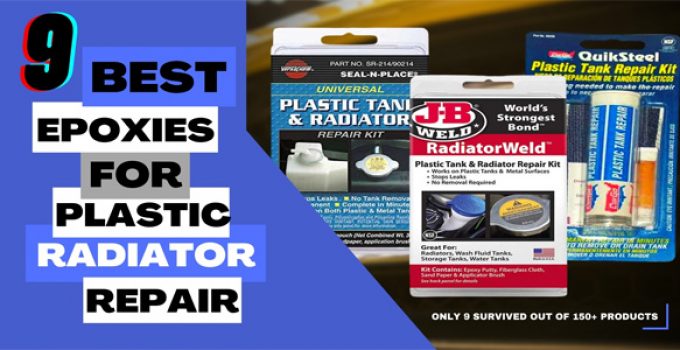
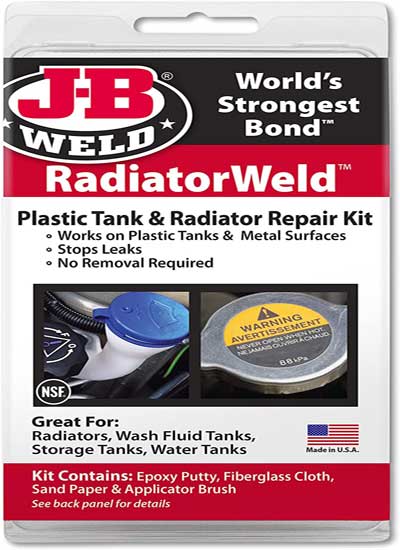

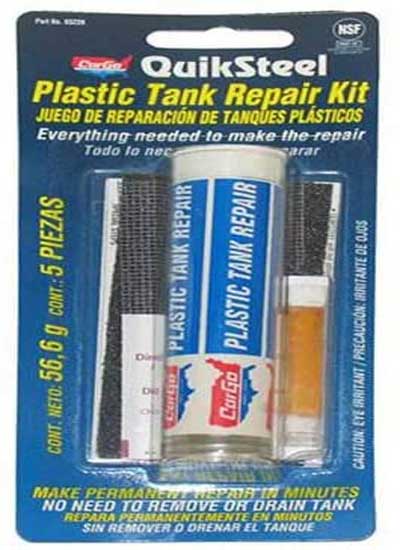
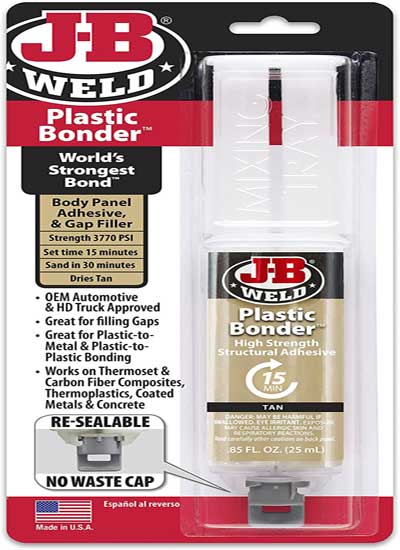
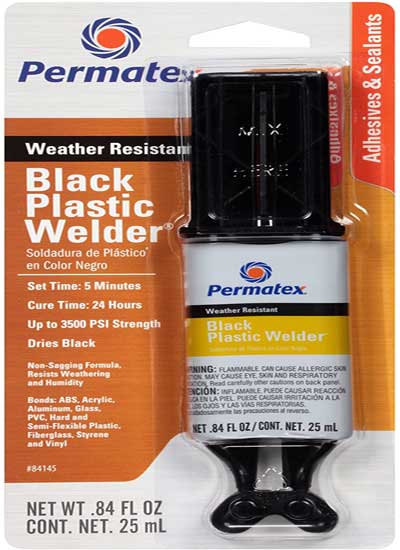
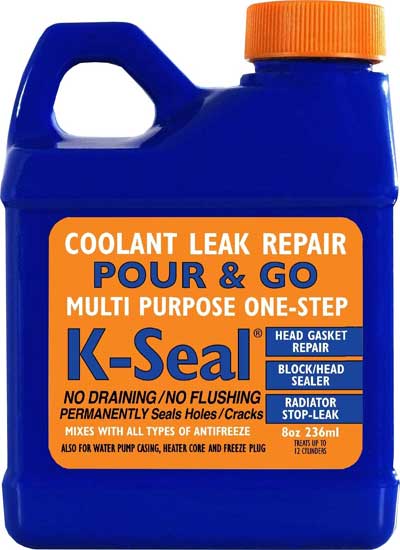
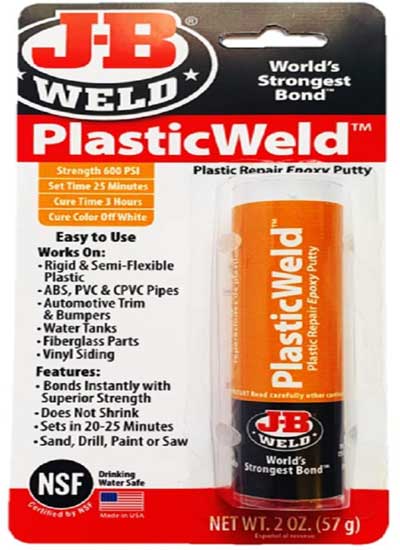

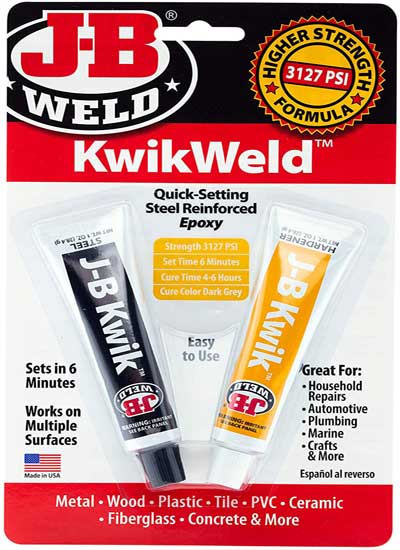

![Best Cam for 5.7 Hemi Ram – [ TOP 8 PICKS ] Best Cam for 5.7 Hemi Ram – [ TOP 8 PICKS ]](https://mechanicinsider.com/wp-content/uploads/2020/10/best-cam-for-5-7-hemi-1-211x150.jpg)

Does the radiator weld repair kit bond the plastic to the metal pcasiing and n my radiator